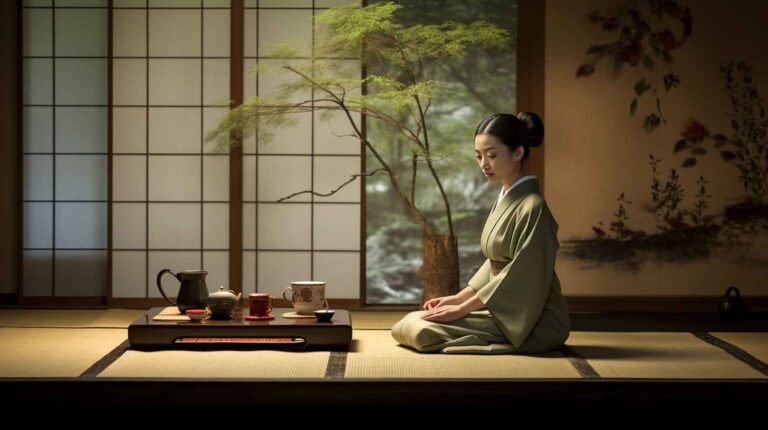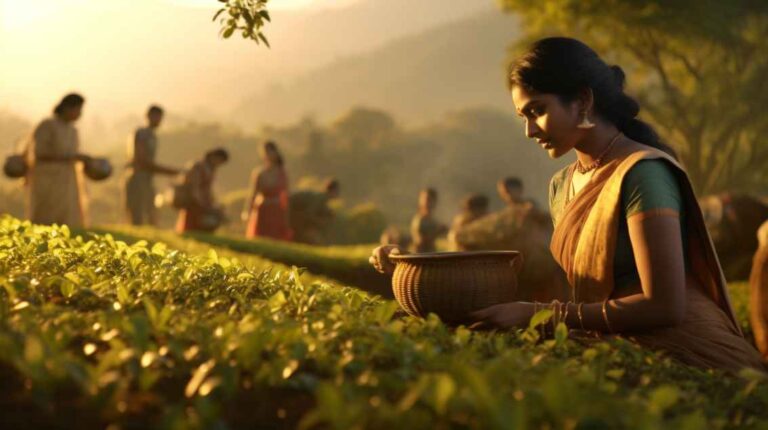From Emperor to Everyman: The Journey of Tea in China
Introduction
China’s history is not just a mere sequence of events, but a vast, intricate tapestry woven with tales of heroes, discoveries, and traditions. Among these, the tale of tea stands out as a fragrant thread. What started as an accidental discovery transformed into an integral part of the nation’s fabric. Beyond its role as a beverage, tea in China has journeyed through the annals of empires, witnessed the turbulence of wars, been a crucial part of trade routes, and found its way into the daily lives of billions. This narrative invites readers to embark on a voyage; from the mythical origins of tea with a legendary emperor to the teapots and tea leaves in contemporary households.
The Mythical Beginnings: Shen Nong’s Accidental Brew
Centuries before modern documentation and science, folklore and mythology shaped the understanding of the world. Emperor Shen Nong, a figure not just of royalty but also revered as the pioneering father of Chinese medicine, is central to one such myth. While many of his contributions were deliberate, his discovery of tea was serendipitous.
Legend paints a vivid picture: on a typical day, Shen Nong sat beneath a tree, boiling water. As fate would have it, a gust of wind caused leaves from the Camellia sinensis plant overhead to fall into his pot. This unplanned blend infused the water with a unique aroma, capturing Shen Nong’s curiosity. His first sip was not just a taste of a new beverage but the beginning of a cultural revolution. This accidental brew laid the foundation for tea’s indomitable presence in Chinese life.
But it’s not just the discovery that makes this tale significant. It represents the Chinese philosophy of harmony with nature. The story underscores the importance of chance, the embrace of nature’s gifts, and how they seamlessly find a way into daily life, enriching it.
Tea and the Tang Dynasty: A Cultural Elevation
While Shen Nong’s story marks the inception, the Tang Dynasty (618-907 AD) stands out as a golden era that heralded the cultural elevation of tea. During this period, the importance of tea wasn’t just confined to its taste or refreshment qualities. It became a symbol, a subject of study, and an art form.
One name that resonates prominently from this period is Lu Yu, often termed as the ‘Saint of Tea’. His magnum opus, “The Classic of Tea,” wasn’t merely a guide but a philosophical treatise. It meticulously examined every aspect of tea, from the nuances of cultivation, the art of preparation, to the deeper cultural implications. This period saw tea blending with other forms of art. The poetic eloquence of Li Bai and Du Fu, renowned poets of the Tang Dynasty, often extolled the virtues of tea. Painters captured its serenity, and philosophers found in tea a metaphor for life and wisdom.
Song Dynasty: An Era of Artistry and Ceremonial Grace
As dynasties shifted, the narrative of tea continued to evolve. The Song Dynasty heralded a unique blend of artistry and grace in the realm of tea. This era saw emperors and nobility not just consuming tea but elevating it to an act of reverence.
One of the standout features was the introduction of whisked powdered tea. This preparation method, coupled with the era’s penchant for exquisite porcelain, became more than just a method; it was a symbol of sophistication and refinement. Imagine the grandeur of the Song courts, where tea competitions became a norm. Here, connoisseurs and enthusiasts would gather, engaging in spirited debates, judging tea based on aroma, hue, and taste. These competitions weren’t just about the beverage but highlighted the era’s emphasis on aesthetic appreciation, cultural nuances, and the sensory experience tea provided.
As we journey through these epochs, from Shen Nong’s mystical discovery to the artistic reverence of the Song Dynasty, it becomes evident that tea’s trajectory in China is not linear. It is an ever-evolving tapestry of events, innovations, and traditions. The next chapters in this tale, from the transformative Ming and Qing dynasties to the tumultuous 19th century, will further illuminate tea’s enduring impact on Chinese culture and beyond.
Ming and Qing Dynasties: Transformations and Trade
With the ebb and flow of time, dynasties changed, and so did the story of tea. The Ming and Qing periods stand as beacons of transformation, signaling not just the evolution of tea but also its integration into the vast and intricate webs of trade.
The Song Dynasty’s powdered tea saw a dramatic shift during the Ming era. The preference moved towards loose-leaf infusions, which further pushed the art of teapot crafting to new heights. This era was marked by regionalism in tea culture, where provinces took immense pride in their unique tea varieties. Among these, the Longjing tea of Hangzhou deserves special mention. With its subtle aroma and pristine green hue, it encapsulated the essence of the region.
Trade, during this period, wasn’t just a matter of economic exchange. The renowned Tea Horse Road stands as a testament to this. This ancient trade route linked the tea producers in the Chinese heartland to the high-altitude demands of Tibet. However, it wasn’t just a simple transaction of goods. The exchange of culture, traditions, and ideas flowed along this road, knitting together regions with their mutual dependencies.
Opium Wars: The Dark Shadow Over Tea
The journey of tea has had its share of dark chapters, and the 19th century was undeniably one of them. Britain’s burgeoning demand for Chinese tea created an economic conundrum. The flow of silver from Britain to China for tea destabilized the economic balance. To rectify this, Britain sought an alternative – opium.
The massive influx of opium into China led to widespread addiction, straining societal fabrics and posing challenges to the Chinese government. The ensuing confrontations, commonly referred to as the Opium Wars, dramatically reshaped geopolitical relationships, with deep and lasting implications on trade, especially tea. This period, albeit grim, serves as a reminder of how global cravings, politics, and trade can influence the trajectory of even something as serene as tea.
Modern China: A Revival and Reinvention
Post the cultural revolution, a new dawn emerged for China, and with it came a renaissance for tea. It wasn’t merely about resurrecting old traditions but also about adapting and innovating for the contemporary era.
Modern China saw the establishment of specialized tea institutes and research centers. These hubs of knowledge not only delved deep into the botany and cultivation of tea but also explored its health benefits, further solidifying tea’s importance in daily life.
Urban landscapes in China today present a beautiful contrast. Winding ancient alleys lead to traditional tea houses where the age-old rituals are preserved. Yet, a few blocks away, bustling city squares are home to chic cafes serving bubble tea, a global sensation that marries traditional tea with tapioca pearls and flavors, reflecting the harmony of ancient traditions with modern tastes.
Global Influence: The Chinese Diaspora and Tea
China’s global footprint can be observed through its vast diaspora. And wherever they went, they took with them a piece of home, and often, this included their cherished tea traditions. From the vibrant energy of San Francisco’s Chinatown to the quiet elegance of tea houses in London, the global expansion of Chinese tea culture is undeniable.
These overseas communities became the ambassadors of Chinese tea, introducing its richness to foreign palates. With every cup poured in a distant land, a narrative of Chinese heritage, philosophy, and tradition was shared, fostering global appreciation and adaptation.
Tea’s Ethereal Essence: Beyond the Leaves
But to understand tea in China is to look beyond its physical form. It is more than just leaves and water. It represents meditation, hospitality, and social connection. It bridges the everyday with the spiritual. The ancient Taoist principles, which stress on harmony, balance, and simplicity, resonate deeply in the Chinese tea ceremony, or “Gongfu Cha”. This isn’t merely about brewing tea but a philosophical ritual. Every gesture, every pour, every sip, speaks of a belief that even the most ordinary actions can open doors to deeper understanding and spiritual enlightenment.
Conclusion
From the myths surrounding Shen Nong to the bustling tea stalls in Shanghai and Beijing, tea’s story in China is rich, multi-layered, and infused with resilience, innovation, and passion. Each brew, each aroma, offers a glimpse into China’s heart, its history, and its soul. As the world becomes increasingly interconnected, the narrative of Chinese tea, its traditions, innovations, and legacies, continues to seep into global cultures, serving as a poignant reminder of our shared histories and mutual appreciation.






